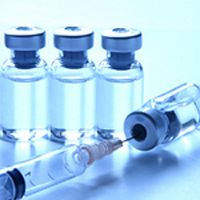Article
Patients Poorly Responding to Secukinumab May Benefit with Risankizumab Switch
Author(s):
New data suggests that patients with psoriasis may see positive outcomes after switching from secukinumab 150 mg to risankizumab 75 mg if secukinumab responses are inadequate.

A new research letter suggests that psoriasis patients who respond poorly to secukinumab 150 mg should consider up-dosing to 300 mg, which is often seen in clinical practice, but switching to risankizumab 75 mg may be more cost-effective.1
That being said, the research letter’s authors believe more extensive, randomized studies may be needed to establish efficacy and drug survival of risankizumab 75 mg among different populations.
This research letter was authored by Tsen-Fang Tsai, MD, and Chang-Yu Hsieh, from the Department of Dermatology at National Taiwan University Hospital in Taipei. Tsai and Hsieh stated that biologic use has become a significant element of psoriasis treatment.
“The use of biologics in recent decades has revolutionized the treatment of psoriasis,” Tsai and colleagues wrote. “However, the high cost poses a significant barrier to patients who do not have access to reimbursed biologics.”
Consequently, the investigators sought to examine alternative biologics to secukinumab—an interleukin (IL)-17A blocker—as it is the only biologic that can be applied in reduced doses.
Background and Findings
The investigators noted that IL-17 and IL-23 inhibitors are known for being safe and efficacious, with its lower dose option being 150 mg every 4 weeks following an initial loading dose. This lower dosage of the drug is particularly beneficial for psoriasis patients with lower body weight or who have not previously been treated with biologics.
The research team noted that risankizumab—an IL-23 blocker—has been evaluated in reduced doses previously, adding that a prior study found that there were comparable PASI-75 and 90 responses in patients being given either 75 mg or 150 mg. As a result of this, risankizumab 75 mg dosing every 12 weeks has been approved for treatment in Japan.
For this study, the team conducted a retrospective analysis of 7 patients who had been given reduced doses of secukinumab prior to risankizumab, although they were still administered at the recommended frequencies.
The patient group consisted of 6 females and a single male, with a mean age of 47.6 ± 18.5 years and a mean weight of 58.9 ± 7.2 kg. Among the patients, 4 were untreated with biologics prior to the study, and the remaining patients had received various biologics including etanercept, adalimumab, and ustekinumab before secukinumab.
All of the included patients showed a static Physician's Global Assessment (sPGA) score of 2 – 3 and a mean PASI score of 6.6 ± 4.4 prior to initiation of secukinumab at a dose of 150 mg.
The investigators switched 7 patients who had been using secukinumab 150 mg for varying periods of time (from 16 weeks up to 4 years) to risankizumab 75 mg due to inadequate response or secondary failure of secukinumab. They switched 6 patients without interruption, while 1 patient resumed risankizumab a year after they stopped secukinumab.
Although 3 patients achieved PASI-75 scores and 1 showed a PASI-100 response after using secukinumab for over 52 weeks, the researchers noted that all of the patients experienced secondary failure. After switching to risankizumab, the team found that all had decreased PASI scores.
Additionally, 2 achieved PASI-100 and three achieved PASI-90 response at week 52. No one discontinued risankizumab as a result of any adverse effects.
Overall, the investigators note that their findings align with those of the previous aIMM study and suggest that switching from secukinumab to risankizumab at reduced doses may benefit those who did not adequately respond to secukinumab.2
“Further larger randomized studies are required to confirm the efficacy and drug survival of RZB75, especially in other ethnic groups,” the investigators wrote.
References
- Hsieh, C.-Y. and Tsai, T.-F. (2023), Effectiveness and safety of reduced-dose secukinumab switching to risankizumab for psoriasis patients in Asian population: A case series. Exp Dermatol. https://doi.org/10.1111/exd.14810.
- Warren RB, Pavlovsky L, Kokolakis G, et al. Efficacy and safety of risankizumab in psoriasis patients who had a suboptimal response to secukinumab or ixekizumab. Eur Acad Dermatol Venereol Congr. 2022;1537.





